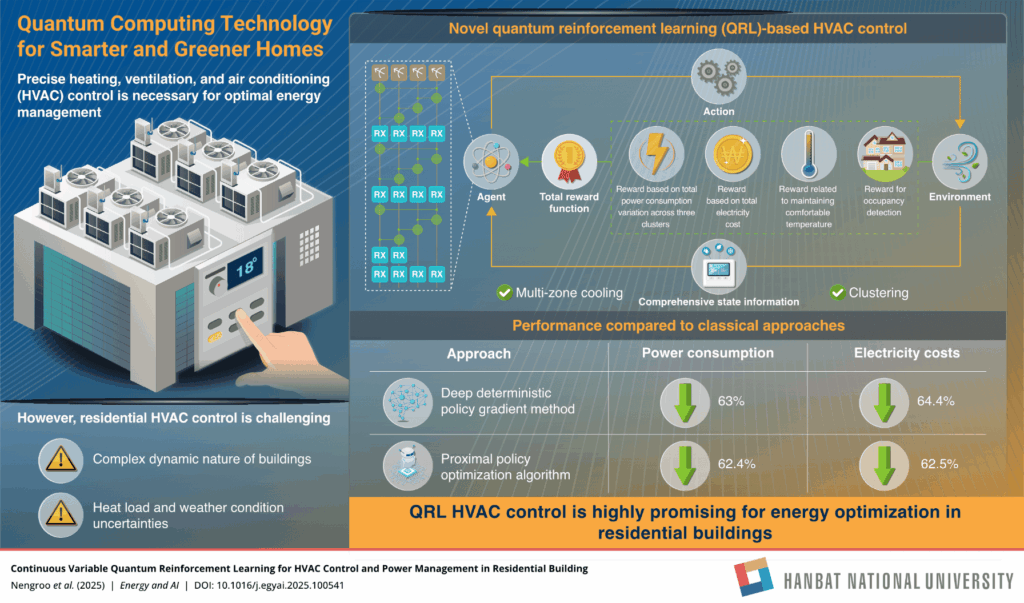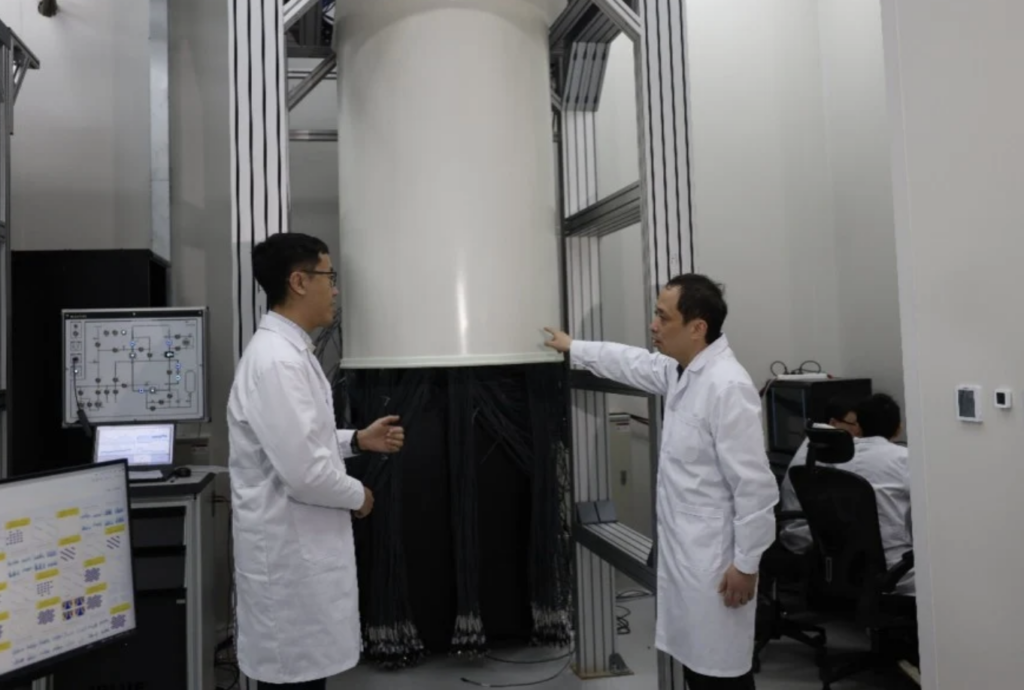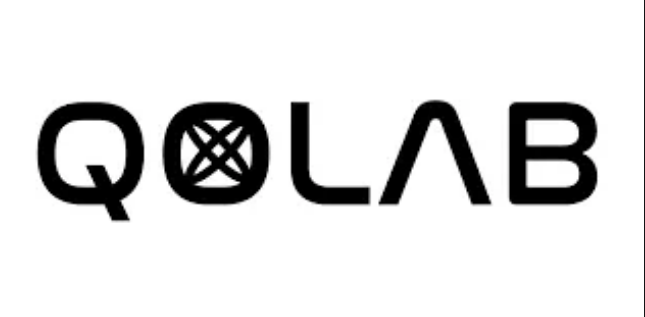Insider Brief
- Researchers in South Korea demonstrated the first continuous-variable, quantum-enhanced reinforcement learning system for residential HVAC and home power management, published in Energy and AI.
- The system integrates occupancy detection, real-time power and environmental data, and multi-zone cooling to reduce energy consumption and costs by over 60% compared with classical methods while maintaining comfort.
- The retrofit-friendly framework can extend to buildings, microgrids, and virtual power plants, offering scalable applications in smart thermostats, demand-response programs, and grid-interactive efficient buildings.
- Photo by Zoshua Colah on Unsplash
PRESS RELEASE — Residential heating, ventilation, and air conditioning (HVAC) systems constitute a significant proportion of energy usage in buildings, necessitating energy management optimization. In this context, occupancy aware HVAC control is a promising option with 20-50% energy savings in homes. However, occupancy sensing technology suffers from long payback times, privacy issues, and poor comfort. Moreover, there is an increasing need for further advanced technologies that help regulate indoor air quality in addition to energy control.
To meet these expectations, scientists have recently turned to intelligent control methods such as quantum reinforcement learning (QRL) based on quantum computing principles. Such approaches can notably accelerate the machine learning process as well as handle the complexity of real-world building dynamics.
In a new breakthrough, a group of researchers from the Republic of Korea, led by Sangkeum Lee, Assistant Professor of Computer Engineering at Hanbat National University, have presented the first demonstration of continuous-variable, quantum-enhanced reinforcement learning for residential HVAC and home power management. Their innovative findings were made available online on 16 June 2025 and published in Volume 21 of the journal Energy and AI on 01 September 2025.

Dr. Lee highlights the novelty of their work. “Unlike conventional reinforcement learning techniques, QRL leverages quantum computing principles to efficiently handle high dimensional state and action spaces, enabling more precise HVAC control in multi-zone residential buildings. Our framework integrates real-time occupancy detection using deep learning with operational data, including power consumption patterns, air conditioner control data, and external temperature variations.”

Furthermore, the proposed technology integrates features such as multi-zone cooling—to control temperature of individual zones in building—and clustering—to group similar data points and adjust cooling. In this way, a single controller jointly optimizes comfort, energy cost, and carbon signals in real time.
The researchers performed simulations based on real world data from 26 residential households over a three-month period. They found that QRL HVAC control significantly outperforms deep deterministic policy gradient method as well as proximal policy optimization algorithm, while maintaining thermal comfort, achieving 63% and 62.4% reductions in power consumption, respectively, and 64.4% and 62.5% decrease in electricity costs, respectively.
The present approach comes with many more benefits. It is retrofit-friendly and works with standard temperature, occupancy, and CO₂ sensors and common HVAC equipment and thermostats. It is also robust to uncertainty, easily handling noisy forecasts on weather and occupancy and device constraints. In addition, it has a generalizable framework that can be extended from apartments to small buildings and microgrids.
Dr. Lee talks about the potential applications of their innovation. “It can be utilized in smart thermostats and autonomous home energy management systems that co-optimize comfort, bills, and emissions without manual tuning and rooftop photovoltaics and home battery scheduling. Our framework is also useful for utility demand-response and time-of-use programs with automated control.”
QRL based HVAC control can notably be applied at community or campus scale through grid-interactive efficient buildings and virtual power plants (VPPs). Herein, millions of homes can coordinate as VPPs to stabilize renewables-heavy grids. It can also ensure personalized indoor environmental quality within carbon budgets and integrate advanced intelligent control options.
As hardware matures in the coming years, quantum-accelerated policy search could facilitate faster training for complex multi-energy systems such as HVAC, electric vehicles, and energy storage systems. In the long term, this work is expected to guide the path toward standardized secure controllers that can be certified and deployed at a wide scale!
















